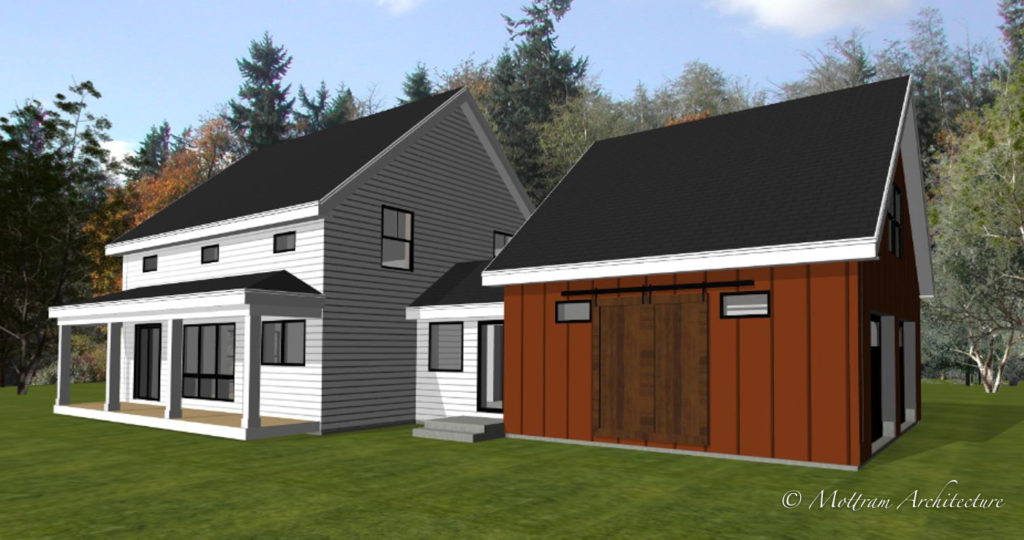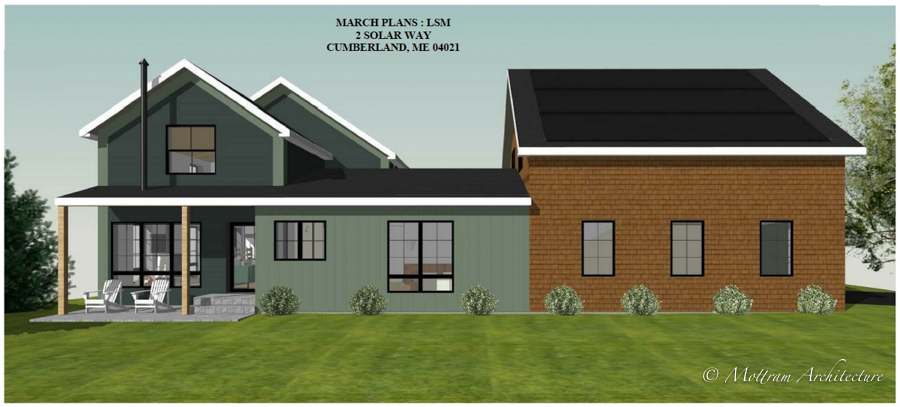You may or may not have seen that Bensonwood is rolling out a new division of their company called Tektoniks where they are combining their knowledge from Bensonwood and Unity homes to help supply the market with something it desperately needs: Better Homes with Panelized ConstructionPrefab, modular and panelized construction has gotten a bad name over the years. People often associate it with low quality housing, but that's not really the case. Look back to the start of kit housing and the Sears catalog and you'll see that they sold over 70,000 homes between 1902 and 1940. The kit of parts was delivered to the site and often raised in a "barn raising" type style. It supplied a need for housing in the country that was quick and affordable. And to be honest, pretty stylish.Somewhere along the lines we lost some of that stylish design, the adherence to quality, and the ability to move forward in the building industry building BETTER homes, not just cheaper homes.But I digress, what does panelized construction have to do with today's housing needs? As an architect working with zero energy and super insulated houses, I find panelized construction fascinating. We've been using it on one of our developments in Maine for the last several years. We started with a framer that builds the walls in a shop, delivers them to the site, and 3 days later we have a shell. Framing them in the shop cuts down on time, often taking a 9-12 month build down to 6 months. The quality control and material control can cut waste and job site debris down by almost 25%. And when you're building indoors, weather delays aren't an issue. So while the site is being prepped, framing is happening at the same time. But our framer, he's busy. I wish we had 2 or 3 more to help with construction right now.But how are they different? Why is this different than SIPS panels or modular construction? These are prototypes of zero energy homes. We spend hours in design development working out the systems to cut down on thermal bridging, orient the home the right direction, and provide really great spaces. We are very strict about the materials we use cutting out as much foams, plastics, and formaldehyde products. They are custom homes where we eliminate as much square footage as possible while still spending the time to make spacious areas and a spot for everything. More square footage isn't better, it's just more. In a world where we are seeing people going back to their roots, wanting less, spending more time outside of the home or in a community, this seems like the right answer. Minimizing the impact of building, the buildings impact on environment, and most importantly celebrating it's impact on the occupants. Our health and welfare can be directly linked to where we live.So why aren't we building better? Well the answer is, here at Mottram Architecture, we are.Stay tuned for updates on how the next Live Solar Maine house is going:
We started with a framer that builds the walls in a shop, delivers them to the site, and 3 days later we have a shell. Framing them in the shop cuts down on time, often taking a 9-12 month build down to 6 months. The quality control and material control can cut waste and job site debris down by almost 25%. And when you're building indoors, weather delays aren't an issue. So while the site is being prepped, framing is happening at the same time. But our framer, he's busy. I wish we had 2 or 3 more to help with construction right now.But how are they different? Why is this different than SIPS panels or modular construction? These are prototypes of zero energy homes. We spend hours in design development working out the systems to cut down on thermal bridging, orient the home the right direction, and provide really great spaces. We are very strict about the materials we use cutting out as much foams, plastics, and formaldehyde products. They are custom homes where we eliminate as much square footage as possible while still spending the time to make spacious areas and a spot for everything. More square footage isn't better, it's just more. In a world where we are seeing people going back to their roots, wanting less, spending more time outside of the home or in a community, this seems like the right answer. Minimizing the impact of building, the buildings impact on environment, and most importantly celebrating it's impact on the occupants. Our health and welfare can be directly linked to where we live.So why aren't we building better? Well the answer is, here at Mottram Architecture, we are.Stay tuned for updates on how the next Live Solar Maine house is going:
Maine's New Codes
On Monday 4/23/18 Maine will have adopted a new building code, moving from 2009, which is nearly 10 years old, to 2015. It's not the newest code, but it's a step up. However, they have decided to keep the 2009 IECC (Energy Code) and I just don't understand it. In a part of the country that still uses fuel oil to heat their homes, why aren't we trying to improve the efficiency of our structures?I should say it doesn't really apply to us. We are trying to build zero energy ready homes, which leave the energy code far behind. Where code walls are R-21 ours are pushing R-40. Where code ceilings are R-49 we are asking for R-60 plus. But most importantly, we are aiming for between 1-2 air changes per house. In 2009 compliance is 7 air changes per hour. In 2012 it's 5 air changes per hour. In 2015 it's 3 air changes per hour. So not keeping up with the energy code is going to make it hard for builders to make the jump from 7 to 3 or below. Now mind you, not all builders. I'm working with several that aren't having any issues meeting 1-2 ACH and a few that are meeting passive house standards. Reducing air infiltration is the simple most cost effective thing you can do in a new home, maybe aside from facing it the right direction which costs nothing!So why isn't everyone getting on board? Well, I don't say this lightly, it's because it's work. It takes time and attention to every single detail from the right tapes and sealants to the way your components go together. Your house is a system of directly and indirectly related parts. And it's labor intensive, time consuming, and really easy to screw up. I had an installer tell me a horror story about one area in a super tight house not being sealed, all the moisture migrated to this cold location, and it rained indoors. It's also possible to trap moisture in your wall system where you can't see it and you don't know that it's causing a problem. Does this mean that we shouldn't pursue tighter building? Should we just keep building the same drafty houses with fiberglass that we have always built because it's safe? No, definitely not!Building science is something that can be taught. It's something every builder should learn and keep up with. It's something every trade should understand. It's usually the things you can't see in your home that add the most value. I once met a woman who built a beautiful million dollar home that was so cold and drafty to live in that they sold it and started all over again with an energy efficient design. They were disgruntled by having spent so much to then have a home they felt they couldn't live in. I also did a home replacement project last year with a community action agency in Maine. The house was built by a contractor and a handful of high school students. This winter that couple moved from using many chords of wood to stay warm, to one heat pump mini split head. Even in the 20 below weather, the heat pump only went down once. They turned it off for 10 minutes, and never had another issue again.So no, we don't think we should keep building the same old way. And sure, architecture is a jigsaw puzzle and we don't always get it right. But we feel strongly that we are moving in the right direction. So if you have the opportunity to build a home, spend a little time doing some research first on what it will cost you to live in it, the technologies and resources that are available, and hire a professional to help you get the most for your money. Not just the money your spending now, but the money you'll spend over the next 30 years.


